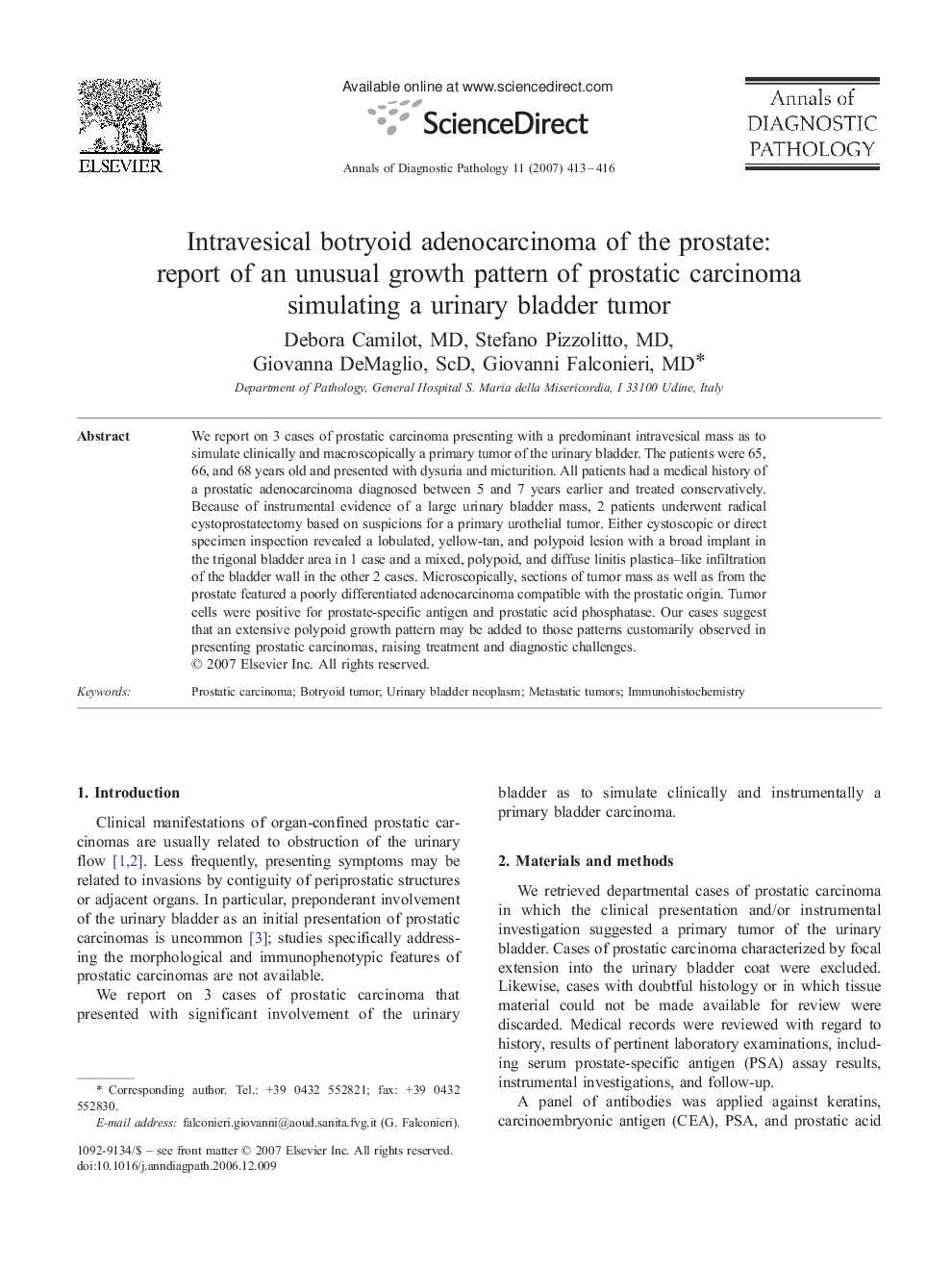| Article ID | Journal | Published Year | Pages | File Type |
|---|---|---|---|---|
| 4130700 | Annals of Diagnostic Pathology | 2007 | 4 Pages |
We report on 3 cases of prostatic carcinoma presenting with a predominant intravesical mass as to simulate clinically and macroscopically a primary tumor of the urinary bladder. The patients were 65, 66, and 68 years old and presented with dysuria and micturition. All patients had a medical history of a prostatic adenocarcinoma diagnosed between 5 and 7 years earlier and treated conservatively. Because of instrumental evidence of a large urinary bladder mass, 2 patients underwent radical cystoprostatectomy based on suspicions for a primary urothelial tumor. Either cystoscopic or direct specimen inspection revealed a lobulated, yellow-tan, and polypoid lesion with a broad implant in the trigonal bladder area in 1 case and a mixed, polypoid, and diffuse linitis plastica–like infiltration of the bladder wall in the other 2 cases. Microscopically, sections of tumor mass as well as from the prostate featured a poorly differentiated adenocarcinoma compatible with the prostatic origin. Tumor cells were positive for prostate-specific antigen and prostatic acid phosphatase. Our cases suggest that an extensive polypoid growth pattern may be added to those patterns customarily observed in presenting prostatic carcinomas, raising treatment and diagnostic challenges.
